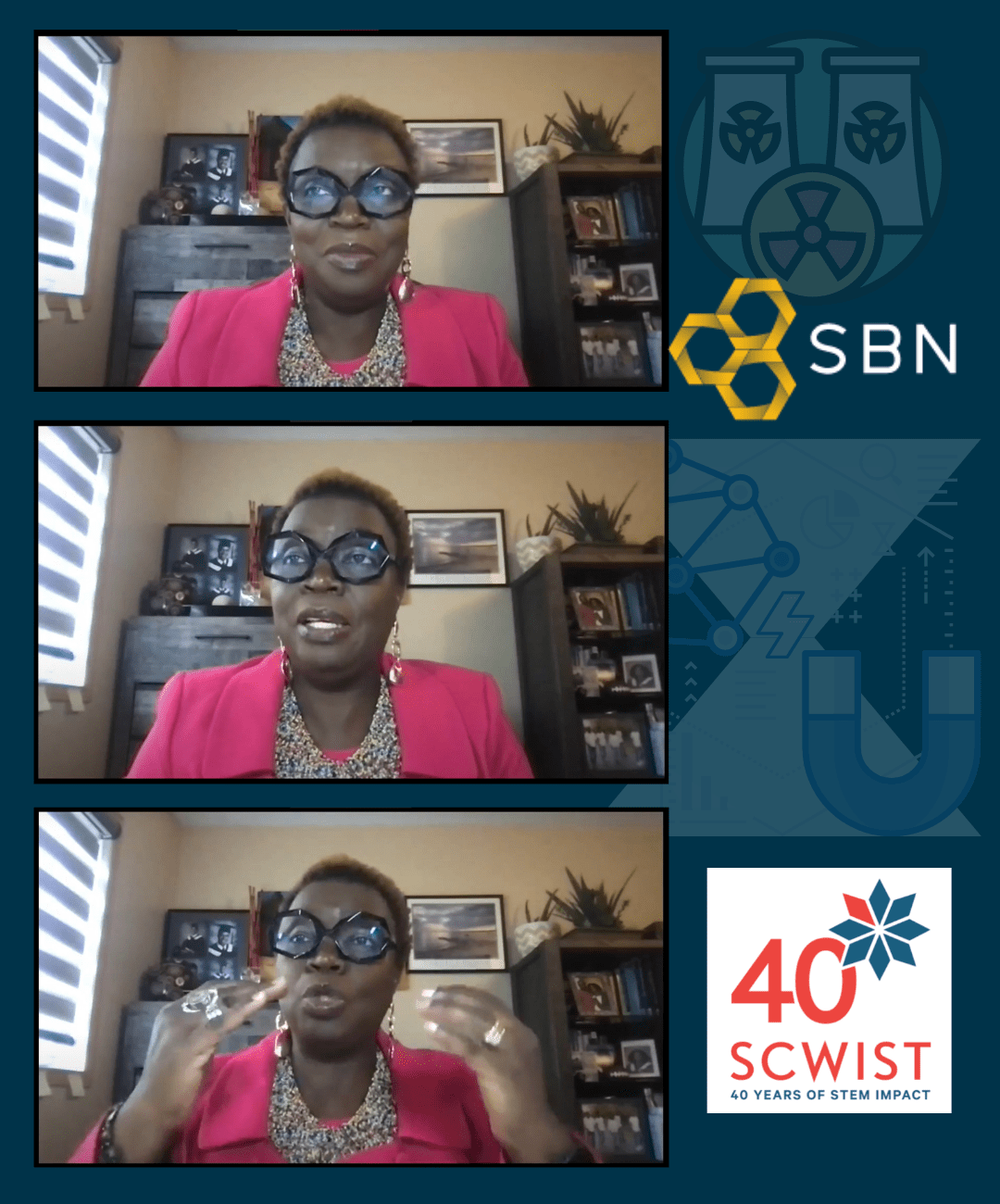Enhancing Diversity in our STEM Community
Back to Posts
On October 1st, the Student Biotechnology Network hosted their annual Building Biotech Expo, a leading networking event with the best and the brightest of the BC biotech and life sciences industry.

This annual event attracts and unites hundreds of students every year, along with professionals from the life sciences, pharmaceutical and clinical sectors and several prominent organizations as exhibitors. The result is a gathering of students and professionals, eager to share ideas and forge a strong biotech community that will help shape BC’s biotech future.
SCWIST member Juanita Desouza-Huletey, B.A (Hons), MA, PMP, ALEP, BRM, PROSCI, ITIL, was invited to be the event’s keynote speaker.

Juanita is a woman in STEM, an immigrant, a leader, an educator, a coach, a speaker, an advocate for social justice, especially for immigrants, and more. She has served in many executive leadership positions and is currently a member of the Board of Governors of the University of Manitoba. She is an accomplished Information Technology Management professional with over 30 years of industry experience, over 25 in leadership positions, most notably being the first female divisional head of IT at Winnipeg Police Service. An educator at both the University of Winnipeg and Red River College, she loves to impart knowledge and share her professional/personal experiences.
She began her keynote speech with a quote from Kim Lane: “Being a woman in STEM means to defy the naysayers. It means to be something that we were told for so long that we could not be. As an African American woman, it means to pave the way for brown and black girls that look like me.”

“As we know, EDI (equity, diversity and inclusion) is a broad subject and focus can be on different underrepresented groups. Let’s do this way today: by throwing light together on which challenges and barriers women face every day in every corner of the world on the professional front, in STEM and beyond,” she continued. “We all have stories to tell on this subject or that of our mother, our sisters, our aunt or our wife. And we also hear tons of stories every day and other tons remain untold. Half of the voices are heard, and half are left unheard.”
Regarding a question about why women’s inclusion is muted in many leadership roles, she emphasized that women are needed.
“Each step up the ladder of success in work spaces sees a drop in female participation until, at the highest echelons of leadership and decision making, few women are left, as per Harvard Business Review in 2018,” she said. “As many as 50 percent of women working in science, technology, engineering, and mathematics will eventually leave because of hostile male culture, lack of a clear career path and a sense of isolation.”
Juanita then honed in on a more recent crisis: women leaving the workforce as a result of COVID-19.
“These women are not stepping out voluntarily,” she said. “They are being shoved out by disproportionate job loss, shuttered schools, increased household responsibilities including childcare and lack of public policies supporting working women, and pay disparities, especially during the pandemic.”
“Now let us focus on Canada talk about statistics within Canada, only 27 percent of the seats in the House of Commons belong to women. In Canada’s top 500 companies, women comprise 19.5 percent of the board members. Out of these top 500 companies and organizations in Canada, 109 do not have any women on their board of directors. If we talk about leadership roles, women hold only 25 percent of vice-president positions, and 15 percent of CEO positions. This drastic fall can be seen at salaries level too because only 8.5 percent of the highest-paid positions in Canada’s top 100 listed companies are held by women,” she described with disappointment.
“According to 2017 global ranking of gender equality in National Parliaments, Canada was placed at number 63, falling behind Rwanda, Mexico, and the conflict zones of Afghanistan and South Sudan,” she continued. “These sad numbers are not fiction, instead it shows the dark side of our society. It’s worth noting that where women are in positions of power, in many cases they are just occupying a seat without any influence. However, it’s not the case with all because some of us in leadership roles prefer to be a disrupter for positive change in order to challenge the status quo.”
She shared an example: “When I was the Divisional Head of IT in a government office and a member of the Executive Management Team, 20 percent of EMT were women, including the first-ever deputy chief of police, the first-ever head of HR/Civilian, and me, the first-ever head of IT ( me, woman, black, immigrant). However, within a span of 4-6 years, a few of such women change leaders for productive reforms, including me, had no choice but to leave the ‘big boys club’.”
She pointed toward another often-asked question: shouldn’t the most qualified person get the job with the benefits that go with it, regardless of gender?
“In another management position, there are 2 women (including me) and 5 men. I’m the one with the most experience, skill-sets, biggest work portfolio, which involves management of business stakeholders and contractors. In contrast, one area managed by a male has one-fifth of my portfolio but we get the same compensations and benefits, regardless of the tons of extra work which I put in. This is not only my story. I share this experience with many. Actually, women in executive rank are declining at a fast rate,” she said.
“Another question we all are frequently asked is ‘why are women important in leadership roles?’” she continued.
“The companies that have mostly women in leadership roles for the right reasons, not a check-box role, are doing very well because of what we, women bring,” she said.
“Let me dig into some facts: In a report published in Forbes in 2018, it was estimated that gender parity in the workplace may add up to $28 trillion (or 26 percent) to the annual global GDP by 2025. This is huge if we don’t do anything about this. It is such a crucial issue and I am glad that platforms are organized for learning and sharing experiences. So, the inclusion of more women in leadership roles can help in achieving this goal. Cisco is a good example that has adopted the targeted approach to create diversity and to promote inclusion.”
But, where is the root of the problem?
“Don’t we all think we need to raise our girls with the same confidence and critical thinking ability with which we raise our boys? I am who I am today because I had my dad as a mentor and someone who did not differentiate between me and my brothers. My dad imparted his strength to me and made me what I am today. This is the root with which our children grow up and when they enter universities, they have already set their minds about genders and responsibilities in society.” she said.
In her message to all, she said: “Whatever you do at whatever level, have a seat at the table, never ever under-estimate your inner strengths and capabilities, and don’t let your voice get muted. With that being said, It’s also important for us to know that we all have biases and being aware of our own biases and how they are impacting how day to day decisions esp. those of us in leadership whether volunteering or paid… how you lead and manage, how you use your voice at the table … Learn to challenge your own thoughts about EDI and what you can take on to make a difference in your own small way.”
To watch part of Juanita’s speech, please check out the video below.